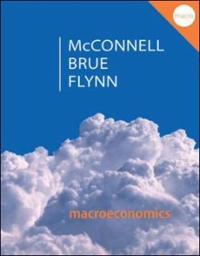Help with the following questions please
4. Consider an open-economy described by the following equations: C = 500+0.75 (YT) I = 2,000 50r T = 2,000 G = 2,000 NX = 750 750e, where e is the exchange rate r = r* = 10, where r is the domestic interest rate and r* is the world interest rate Y = 10,000 All notations have their usual connotations. (a) In this economy, solve for national saving, investment, the trade balance, and the equilibrium exchange rate. (b) Suppose now that G rises to 2500. Solve for national saving, investment, the trade balance, and the equilibrium exchange rate. Explain carefully what you nd. (c) Now suppose that the world interest rate rises from 10 to 20 percent (G is again 2000). Solve for national saving, investment, the trade balance, and the equilibrium exchange rate. Explain carefully what you nd. (2+3+3=8marks) 3. Human Capital in the Romer Model: Let's consider the possibility that human capital is required to produce ideas. To add human capital, we assume the ideas production function is A113.\" = iAthLajg. (1) Furthermore, let's assume that human capital requires labour to produce: Ht = Ls't. (2) The labour is now split into three groups L9,; + La,_t + L3,; = I: For simplicity, let's assume Ly; = 0.5L, L\"; = .2513, and L8,; = .25L. Assume L = 100. (a) What is the economic interpretation of using labour to produce human cap ital? (Hint: This is not a trick question. I am just looking for basically the denition of human capital.) (b) Solve for the balance growth path of GDP per capita in this model. ((3) Does the inclusion of human capital increase the rate of growth compared to the standard model? Explain. (Hint: Think about the growth rate if the extra labour used in L3,: was just allocated to ideas production or goods production in the basic model. How does that case compare to this case?) Consider a twoperiod economy populated by two different individuals. Individual A's lifetime utility is sci,\" + sat\". while that of individual E is Individuals can save or borrow by buying or selling a riskless discount bond in period I] which pays one unit of consumption in period 1. Bonds trade at prioe u in period 1:}. Aggregate inoome is 111 in period I] and 15 in period 1. It is unequally divided; Individual A earns all the income in period El while individual E earns all the income in period 1. a) Which of the two individual has a. stronger desire to smooth consumption over time\"? Explain. b] Which of the two individual has a. stronger preferenoe for period G's consumption? Explain. c) Write down individual A's problem and characterize his optimal savingfborrowing decisions by comparing the cost and benefits of trading bonds (i.e. nd of for A)









